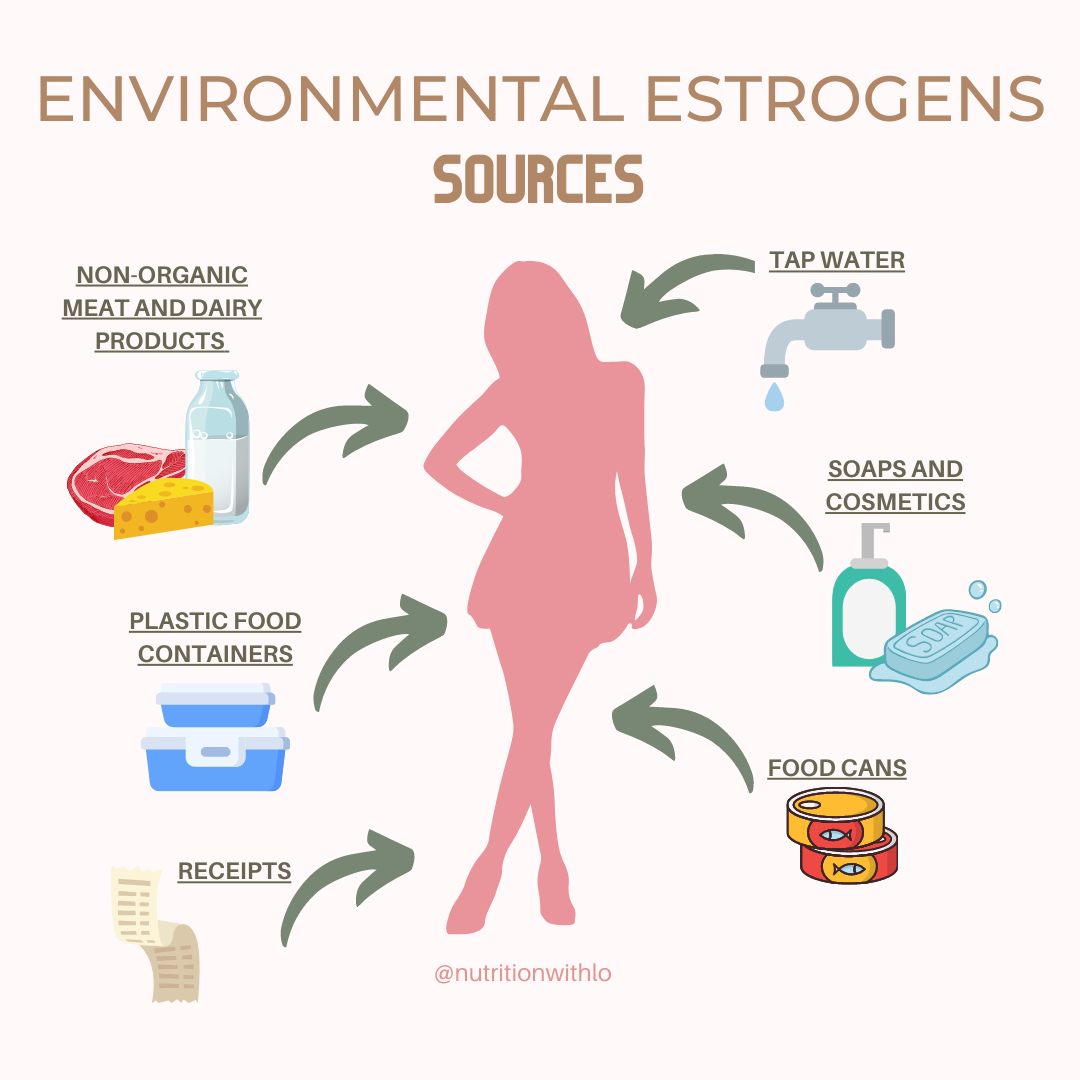Concerns, Sources and Solutions
Some may say that imitation is the greatest form of flattery, but do we really want chemicals from our environment imitating estrogen in our bodies? It’s a definite ‘no’ from us. As women, endogenous estrogen is essential to our reproductive cycle. However, overexposure to estrogen from our environment has profound negative consequences for our health. Read on to find out what these health issues are, what we should be cautious of and how to minimise our exposure.
The health concerns
For decades, there’s been widespread concern that synthetic forms of estrogen can trick the body into thinking they’re the real deal and in doing so wreak havoc on our endocrine and reproductive systems. For example, diethylstilbestrol (DES); a strong synthetic estrogen administered to millions of pregnant women between 1948-1971; resulted in health issues in the women’s children. Daughters of mothers who took the drug later showed reproductive issues including higher rates of infertility, ectopic pregnancy, and preeclampsia, as well as an increased risk of going through an early menopause (Hoover et al. 2011).
More recently, environmental estrogens have been implicated in the development of endometriosis and an increase in breast cancer cases. Indeed, evidence has correlated breast cancer in pre-menopausal women with higher tissue concentrations of DDE (Aronson et al. 2000), and research suggests a higher incidence of endometriosis among those with elevated blood levels of PCBs (Buck Louis et al. 2005).
The sources
Worryingly, scientists have found that the number of environmental contaminants with estrogen-like properties is much greater than we had originally thought. As well as DDE and PCBs, Endosulfan and BPA are common environmental estrogens.
Major sources of these environmental estrogens to look out for, some of which you may not have even considered until now, include food packaging, tap water, and emulsifiers found in soaps and cosmetics. Non-organic meat and dairy as well as herbicides, pesticides and fungicides sprayed on crops, are other common offenders.
The solution
Whilst it’s becoming increasingly difficult to avoid environmental estrogens completely, there are some things we can do to limit our exposure. For example, choosing fresh food over canned means we can avoid BPA found in the lining of food cans.
Meat, fish, milk, eggs and butter are most likely to be contaminated with environmental estrogens so purchasing quality proteins can also help limit exposure. Purchase organic produce where possible and use the Environmental Working Group to help you find fruits and vegetables that have the fewest pesticide residues.
Meanwhile, reduce your exposure by using a water filter and say ‘no’ to receipts, since thermal paper is often coated with BPA. Finally, avoid plastic food containers, especially those marked with ‘PC’ or have recycling label #7.

If you’ve been paying attention to Lauren’s podcasts, you’ll know there are some nutrients that may positively influence estrogen metabolism and therefore help limit the effects of environmental estrogens on our bodies. Pack your diet with plenty of unprocessed soy products, probiotics and cruciferous vegetables to obtain these nutrients.
Curious how these environmental estrogens might be impacting your hormones, a DUTCH Test is the best place to start!
In Health,
Lizzy
References
Aronson, K.J., Miller, A.B., Woolcott, C.G., Sterns, E.E., McCready, D.R., Lickley, L.A., Fish, E.B., Hiraki, G.Y., Holloway, C., Ross, T. and Hanna, W.M., 2000. Breast adipose tissue concentrations of polychlorinated biphenyls and other organochlorines and breast cancer risk. Cancer Epidemiology and Prevention Biomarkers, 9(1), pp.55-63.
Buck Louis, G.M., Weiner, J.M., Whitcomb, B.W., Sperrazza, R., Schisterman, E.F., Lobdell, D.T., Crickard, K., Greizerstein, H. and Kostyniak, P.J., 2005. Environmental PCB exposure and risk of endometriosis. Human Reproduction, 20(1), pp.279-285.
Hoover, R.N., Hyer, M., Pfeiffer, R.M., Adam, E., Bond, B., Cheville, A.L., Colton, T., Hartge, P., Hatch, E.E., Herbst, A.L. and Karlan, B.Y., 2011. Adverse health outcomes in women exposed in utero to diethylstilbestrol. New England Journal of Medicine, 365(14), pp.1304-1314.
Comments +